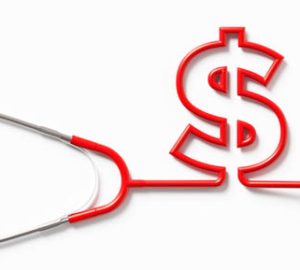
After enrollment in high-deductible health plans soared during the last decade, 2022 marked the first year that enrollment in these plans fell among American workers since 2013, according to a new report by ValuePenguin.
The insurance-review website found that 54% of U.S. workers signed up for HDHPs in 2022, compared to 56% in 2021. The dip, while seemingly small, represents millions of workers that have opted for other plans as employers are offering a greater variety of plans to their employees, including preferred provider organizations (PPOs) and health maintenance organizations.
Additionally, fewer are exclusively offering HDHPs to their employees. In 2022, 9% of employers with 20,000 or more workers offered HDHPs exclusively, a drop from 22% in 2018, according to Mercer’s “National Survey of Employer-Sponsored Health Plans.” And 10% of employers with 500 or more workers offered only these plans, compared to 13% in 2018.
Signs of weariness
There are signs that workers are growing weary of high out-of-pocket expenses associated with HDHPs and are more willing to pay a little extra in premium in exchange for lower deductibles, copays and coinsurance.
Indeed, workers who are enrolled in HDHPs are 30% less confident that they will know what their health care costs will be, compared to those who are enrolled in PPOs, which usually have lower deductibles, according to recent research by Arizent, a publisher of health insurance news. Seven in 10 HDHP enrollees also found their health care costs too expensive, compared to 50% of PPO enrollees.
Offering employees a choice of at least one other type of plan besides an HDHP can avoid blowback. It can create bad feelings if staff think their health plan offers little coverage thanks to a high deductible that they never reach. It hurts even more if they haven’t funded their health savings account (HSA), which often happens.
Additionally, if paying for medical costs becomes a burden, employees may forgo necessary care, likely worsening any conditions they are dealing with, which can affect their productivity at work as well. And if they have a medical emergency, they may have to take on debt to pay for the care.
A happy medium
First: HDHPs are not for everyone. People who have chronic conditions are not good candidates for these plans. A huge deductible before receiving coverage year after year can be a barrier to receiving care.
Fortunately, there are many HDHPs with relatively low deductibles. Under the law, for a plan to qualify as an HDHP it has to have a deductible of at least $1,600 for single coverage and $3,200 for family coverage.
If you can offer an HDHP with a deductible at or near the minimum, along with an attached HSA that you partially contribute to, the plan would be less burdensome for employees. And since HSAs are only available for individuals enrolled in HDHPs, employees need some additional education on the importance of HSAs.
The many benefits of HSAs
- Employees contribute pre-tax dollars to the account.
- Employers can also contribute to the account.
- Funds withdrawn from the account to pay for qualified medical expenses are not taxed.
- Funds in the account can be invested and build value over time, like a 401(k) plan.
- HSAs can be moved when an employee switches jobs.
- Funds can be used for medical expenses at any time, even in retirement.
Finally, HDHPs with a high deductible can be a real value for young and healthy individuals.
That’s because under federal law, an HDHP will pay for a number of basic procedures with no cost-sharing on the part of the enrollee for preventive care like checkups and screenings, which insurers must cover with no out-of-pocket expense on the part of health plan enrollees.


